Last updated on April 9th, 2024 at 01:28 pm
*This post may contain affiliate links and we may earn a small commission if you click on them.
Hey, there sewing enthusiasts! If you’ve just heard about the Ditto projector system and pattern projecting you are probably pretty amazed!
However, did you know that many sewists have been using projectors to project patterns onto fabric for many years before the Ditto was released?
YES! People have been using regular home entertainment projectors for years to cut out patterns!
Ditto is the first commercialize sewing projector system. It is a pretty neat setup with the Ditto app and a “Do-it-for -you” system. However, the price tag of $799 means that many hobby sewist cannot afford the complete system. A recent price reduction to $399 starting in November 2023, made it more affordable, but it is still priced higher than many DIY setups.
A regular projector can be used for sewing. It also can function as a home entertainment projector. But, it will not have the fancy software and “do-it-for-you” integration that the Ditto has for calibration.
Here is a quick picture of a setup I put together to function similarly to the Ditto pattern projector. Pretty sleek, right?
But, let’s dive in to see how they are alike and how they differ! Then, you can decide which is the better choice for you.
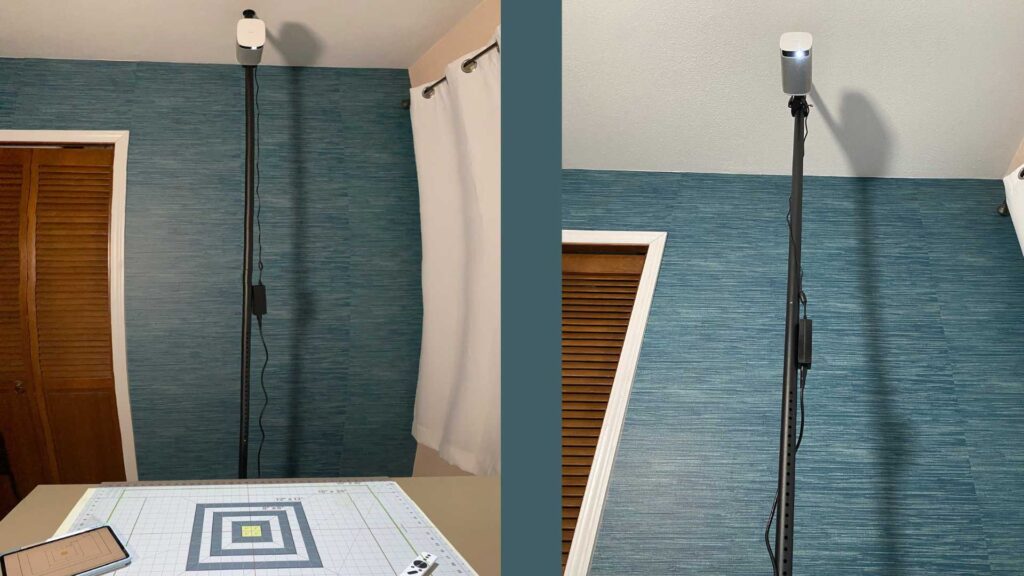
Let’s look at this Do-it-yourself pattern projector setup vs. the Ditto pattern projector system and see which one is right for you!
The Ditto Pattern Projector System
The Ditto pattern projector is more than a sewing projector, it is a complete system that includes a projector, tension rod mount, cutting mat, rotary blade, weights, and software.
One of the biggest advantages of this system is that it’s incredibly easy to set up and calibrate and only takes a click of a button and a few minutes to calibrate. Which means you can get started on your project quickly.
Additionally, the software integrates with DittoPatterns.com to project patterns directly onto your fabric.
All of the setup decisions are made for you, which means you don’t need to research projectors and mounts to find the perfect setup for your room.
However, the Ditto pattern projector will only project an image size of 24”x36” which means you will be “splicing” and shifting fabric for pants and long dresses. They do use target dots and stickers to help you place the fabric once moved, and the Ditto will shift the pattern for you.
If you often only sew children’s clothes and adult tops, the 24″x36″ size may work fine for you. But, if you are constantly having to shift your fabric, you may wish for a larger cutting area.
Check out the Ditto Pattern projector review article for a full explanation of the product.
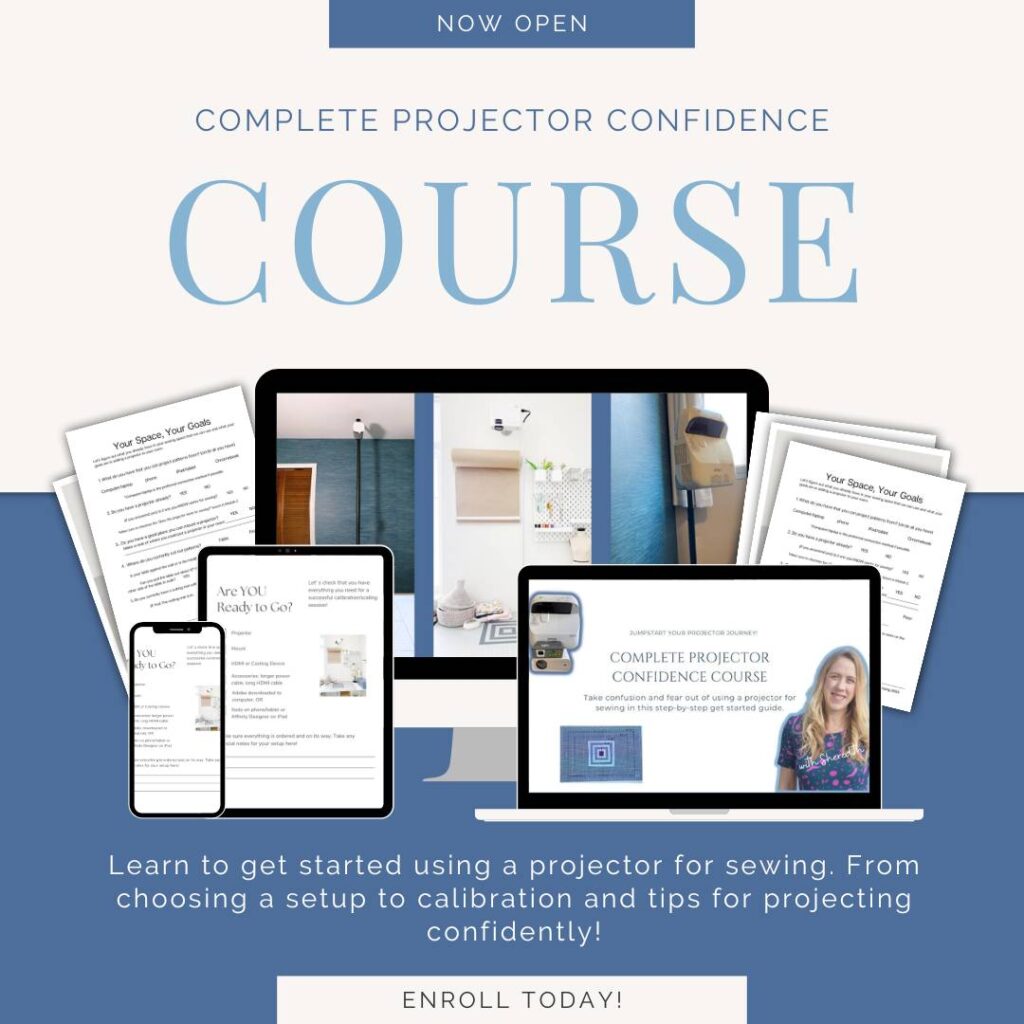
Ditto Pattern Projector
*They are currently working on updates to the Ditto Projector System that affects these points. See more on the About page for DittoPatterns.
The Do-it-Yourself Sewing Pattern Projector
Now, let’s talk about the do-it-yourself projector setup. This is a great option if you’re on a budget, or if you want to choose a setup that works for your sewing room.
I am going to show you one option for a DIY setup that uses a tension rod, but many kinds of projectors work for sewing.
Here’s a list of some of the pros and cons of a DIY pattern projector.
DIY Sewing Pattern Projector
The DIY Sewing Projector
I chose to get the XGIMI MoGo Pro projector for my DIY sewing pattern projector setup. I could have used a cheaper projector, but I wanted a larger image size than 24”x36” (the Ditto is limited to only 24″x36″). Also, this projector has many features making it a great projector for sewing AND family TV and movie night!
Want to check out other projector options? Look at the “Projectors” page! You can even get this projector for about $50 and it is about the same quality as the Ditto projector.
| Preview | Product | Rating | Price | |
|---|---|---|---|---|
|
|
Mini Projector with WiFi Bluetooth, Portable… | 462 Reviews |
$80.00
$55.99 |
Buy on Amazon |
Last update on 2024-05-08 / Affiliate links / Images from Amazon Product Advertising API
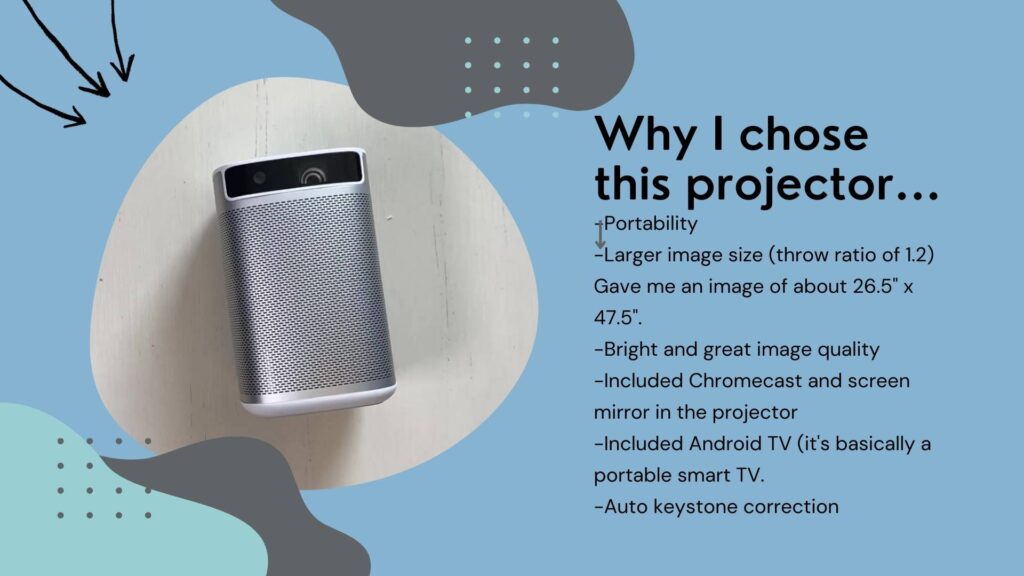
Feature Highlights of the XGIMI MoGo Pro:
- Compact size, 1.87 lbs
- Bright image, 300 ANSI Lumens
- 1080p native resolution
- 1.2 throw ratio (48 6/8” wide image at a distance of 57”)
- Built-in Android TV
- Built-in Chromecast
- Keystone and focus controls on the remote
- Excellent sound quality
- Has an “on edge” offset which allows the image to start on the edge of the table and shine out
For obvious reasons, the TV and sound quality are not necessary for sewing, but they make this projector a great multi-purpose unit! I can take it down and use it for TV, movies, gaming, other arts and crafts, and more!
The original projector that I used was the MoGo Pro and is no longer available. You can get the upgraded versions the MoGo2 (on sale for $299) or the MoGo2 Pro. There are often sales for up to $100 off these projectors that are not listed in the prices below.
- 1080p Image with 300 ANSI Lumens: An advanced…
- Built-In Battery: MoGo Pro’s strong built-in…
- Android Tv: Download apps directly to the…
- Auto Keystone Correction: Autofocus and 40°…
Last update on 2024-05-08 / Affiliate links / Images from Amazon Product Advertising API
| Preview | Product | Rating | Price | |
|---|---|---|---|---|
|
|
XGIMI MoGo 2 Portable Projector, Mini… | 259 Reviews |
$399.00
$299.99 |
Buy on Amazon |
Last update on 2024-05-08 / Affiliate links / Images from Amazon Product Advertising API
Alternative Projectors:
| Preview | Product | Rating | Price | |
|---|---|---|---|---|
|
|
Mini Projector with WiFi Bluetooth, Portable… | 462 Reviews |
$80.00
$55.99 |
Buy on Amazon |
|
|
Short Throw Mini Projector AAXA SLC450 True… |
$199.99 |
Buy on Amazon | |
|
|
[BATTERY] AAXA P400+ Short Throw Native 1080p… |
$228.00 |
Buy on Amazon | |
|
|
Worlds Brightest Battery Pico Projector, AAXA… |
$329.99 |
Buy on Amazon | |
|
|
Sovboi Projector, WiFi Mini Portable… | $99.99 | Buy on Amazon |
Last update on 2024-05-08 / Affiliate links / Images from Amazon Product Advertising API
The Mount
Since the Ditto pattern projector has a mount that is similar to a tension rod, I decided to purchase a curtain tension rod for my DIY setup.
I am not the first to use a tension rod. If you visit the Projectors for Sewing Facebook group, you can see some examples; as well as on the Gallery page.
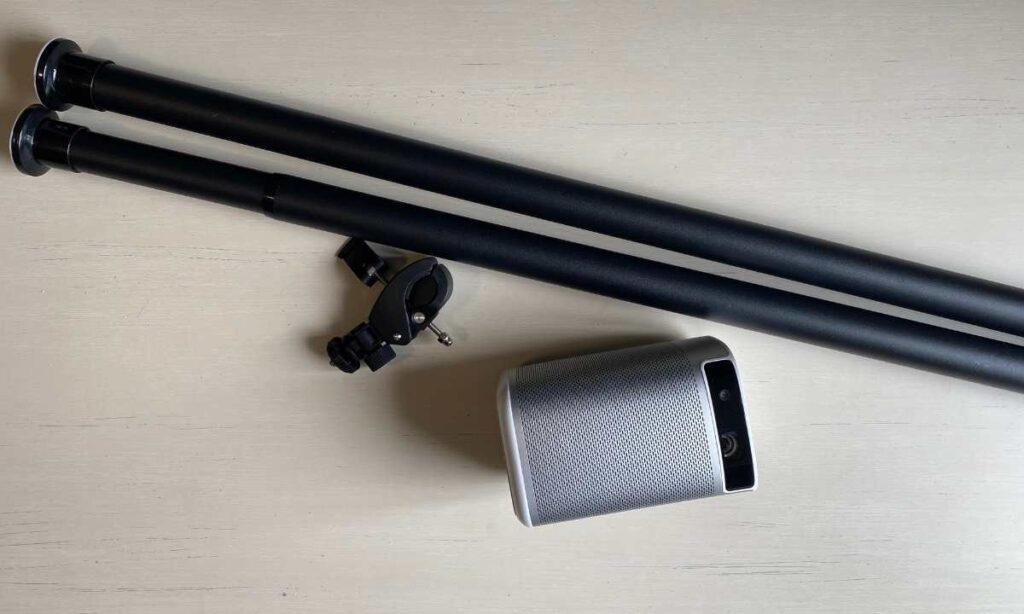
To be able to connect the projector to the tension rod, I also got a clamp mount.
If you decide to purchase this mount setup, make sure you get a tension rod that can extend to the height of your ceiling. Get a clamp mount that works with the type of projector that you get.
The projector I chose has an “on edge” offset. Which means the projector can be placed on the edge of the table and the image will project outwards. Some “mini” projectors need to be centered over the table a little bit.
| Preview | Product | Rating | Price | |
|---|---|---|---|---|
|
|
Homease Tension Shower Curtain Rods… |
$28.99 |
Buy on Amazon | |
|
|
GRIFITI Nootle Quick Release Pipe Clamp 1/4… |
$14.98
$13.98 |
Buy on Amazon |
Last update on 2024-05-07 / Affiliate links / Images from Amazon Product Advertising API
Setting up the DIY Sewing Pattern Projector
The setup of your DIY projector will take only slightly longer than the actual Ditto. It is nice to have a level on hand when setting up your own tension rod!
I decided to connect my projector to the tension rod and clamp first before extending the tension rod, but you can do it after!
Connect the clamp mount near the top of the tension rod. The “bottom” of the tension rod is the end with the adjustable section.
Screw the projector into the clamp mount with the projector pointing down. Level the projector in the clamp mount as much as possible.
Extend the tension rod to the height of the ceiling. Setting it up in the corner, then moving it to the location will help to gauge the height needed.
Use a level on the tension rod to square it up to the ceiling. This is similar to what you need to do with the Ditto. It has a built-in level on the mount to help.
When the mount is squared, you are prepared to move on to calibration!
Calibrating the DIY Ditto
The Ditto shines when it comes to calibration. The built-in software calibrates and squares the image on the provided 24”x36” cutting mat included with the system. It is a few clicks of a button and only a few moments to complete.
To complete the DIY calibration process, you will need the calibration tool and follow the instructions on How to Calibrate a Projector for Sewing.
When I set up my own DIY Ditto projector, I was very close to perfect within 5 minutes. However, I decided to fiddle a little bit more and get one corner, in particular, closer to perfect. I knew the table I was working with wasn’t completely flat and bowed slightly.
I was still able to get it 99% accurate (which is great for sewing) in 15 minutes. Once you calibrate your sewing projector, you don’t need to calibrate again unless you move the projector!
Projecting a Pattern
With the Ditto system, you can choose patterns available on DittoPatterns.com.
The Ditto brand patterns are the only patterns that are customizable and made to measurements. They do have a good number of options. The patterns can be used on a subscription basis or purchased individually.
BYOP was introduced after this article was published. You can now use your existing PDF patterns if you have an active Ditto subscription.
The Ditto app also allows you to unfold, mirror, and arrange pattern pieces how you would like if you are using a pattern from their website. You cannot use these features with the BYOP. The BYOP imports your pattern as an image and you do not have access to layers, arranging, or any of the other features of the app.
To unfold, mirror, and arrange patterns on a DIY setup, you would need to use a program such as Inkscape (free), Adobe Illustrator, or Affinity Designer (low fee). You can also project patterns directly from these programs.
The DIY Sewing projector is just a second screen for your computer. You can use any digital PDF pattern available! With the use of PDF Stitcher you can even use patterns that are formatted for letter/A4 size. The free programs used for DIY projecting allow you to select layers, move, unfold, rotate, grade, make adjustments, and more.
With a DIY projector you can use many companies that offer made-to-measure patterns! Plus, all of your favorite indie sewing pattern companies like Ellie and Mac, Little Lizard King, Made for Mermaids, and so many more!
If they have a digital file, you can use it! Specifically designed projector files are preferred, but A0/copyshop files and even letter-sized files can be used.
Cost
The Ditto Projector system cost $799. This includes the projector, mount, cutting/calibration mat, rotary blade, pattern weights, and the app. In November 2023, the price was reduced to a sale price of $399. My hope is that they remain at this more reasonable cost.
Below is the cost breakdown of this particular DIY projector setup.
I didn’t include my cutting mat, pattern weights, or rotary cutter because I did not spend money on these. I already owned a cutting mat and rotary cutter. If you need to purchase a rotary cutter and mat, add $45 to account for these.
I also didn’t include pattern weights in the cost breakdown because the ones I use are free. You can get a set of pattern weights for around $20 on Amazon.
My goal wasn’t to create a “cheap” setup, just to show a similar tension rod setup and use a nice projector! If I created a similar setup with a projector of the same quality as the Ditto projector, I could reduce the price to around a total of $177 for everything on the list.
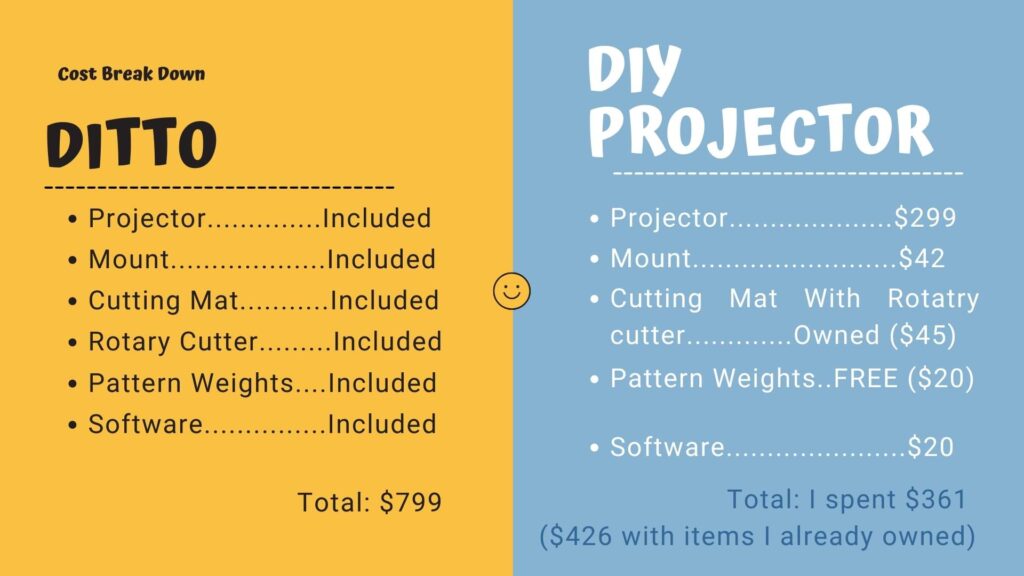
Ditto Vs. DIY Setup
So, how do these two options compare? The Ditto Pattern Projector system is definitely more expensive, but it’s also more convenient. You can get started on your project quickly, and you don’t have to worry about making any decisions about which projector and mount to get or learning how to calibrate the projector.
On the other hand, the do-it-yourself setup is budget-friendly and customizable to your sewing room, but it requires a bit more effort to get started. You’ll need to spend some time choosing a projector and mount, and calibrating your setup. You will also need to use software if you want to rearrange your pattern pieces. However, you can use any PDF pattern, and you can get a larger image size by choosing a projector with a stronger lens or increasing the distance between the table and projector.
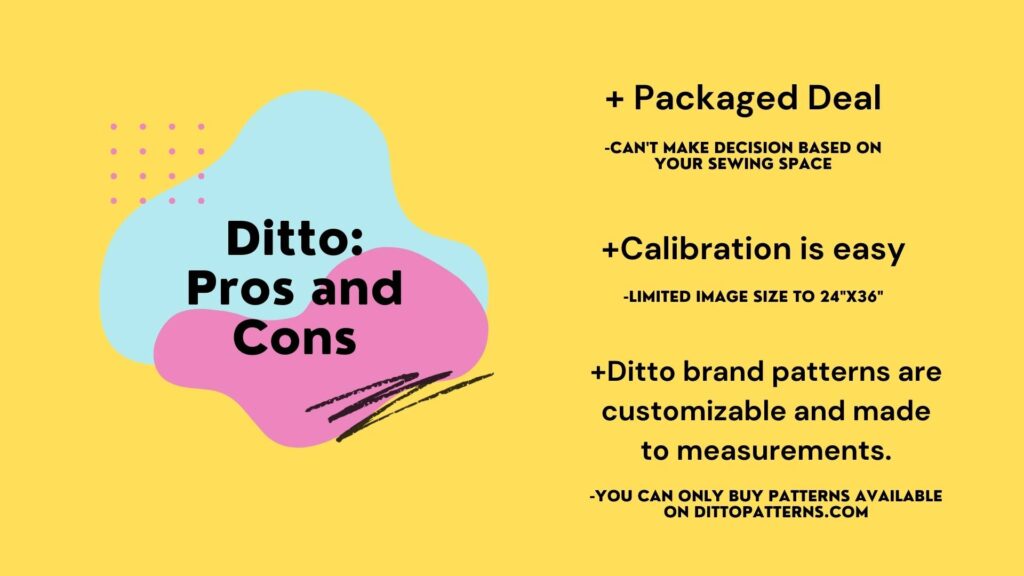
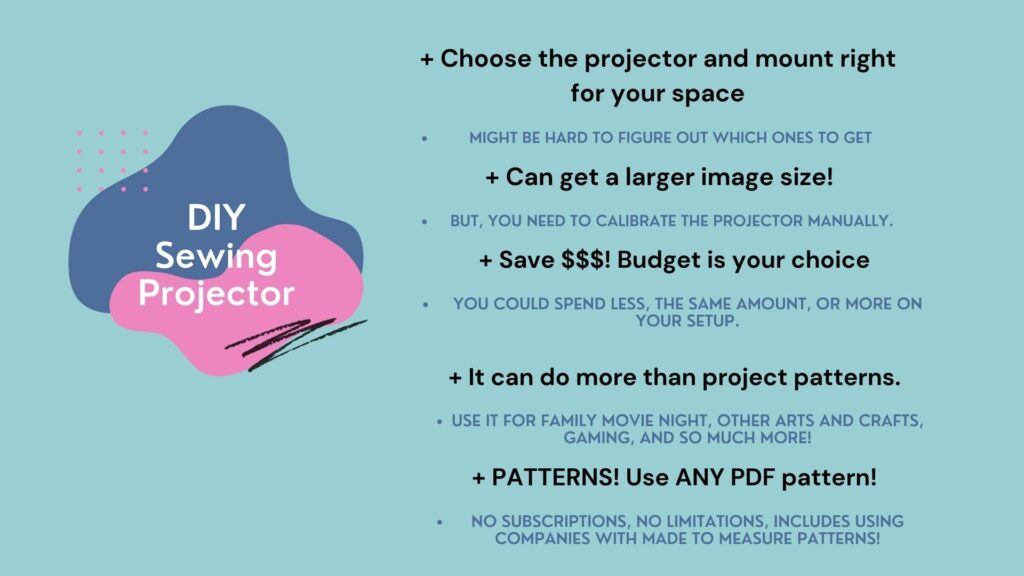
Alternatives to the XGIMI Projector
If you love this setup, but can’t find the XGIMI MoGo Pro projector, then you can check out these alternatives! They are still compact and would work well for this kind of setup!
| Preview | Product | Rating | Price | |
|---|---|---|---|---|
|
|
Mini Projector with WiFi Bluetooth, Portable… | 462 Reviews |
$80.00
$55.99 |
Buy on Amazon |
|
|
Short Throw Mini Projector AAXA SLC450 True… |
$199.99 |
Buy on Amazon | |
|
|
FATORK Mini Projector, 5G WiFi 6 Short Throw… |
$239.99 |
Buy on Amazon | |
|
|
XGIMI MoGo 2 Portable Projector, Mini… | 259 Reviews |
$399.00
$299.99 |
Buy on Amazon |
|
|
[BATTERY] AAXA P400+ Short Throw Native 1080p… |
$228.00 |
Buy on Amazon | |
|
|
Worlds Brightest Battery Pico Projector, AAXA… |
$329.99 |
Buy on Amazon |
Last update on 2024-05-08 / Affiliate links / Images from Amazon Product Advertising API
CONCLUSION
So, which option is right for you? Ultimately, it depends on your budget and your personal preferences. If you’re willing to spend a bit more money, and you want a quick and easy way to start sewing with a projector, then the Ditto might be right for you!
But, if you are willing to put a little bit of time and effort into your setup, you will save money and get a projector with multi-uses that projects any PDF pattern, and does so much more!
For more information, make sure to checkout my complete review of the Ditto Pattern projector!
You might be interested how I even used my projector to clone my clothes!
Whichever option you choose, happy sewing!
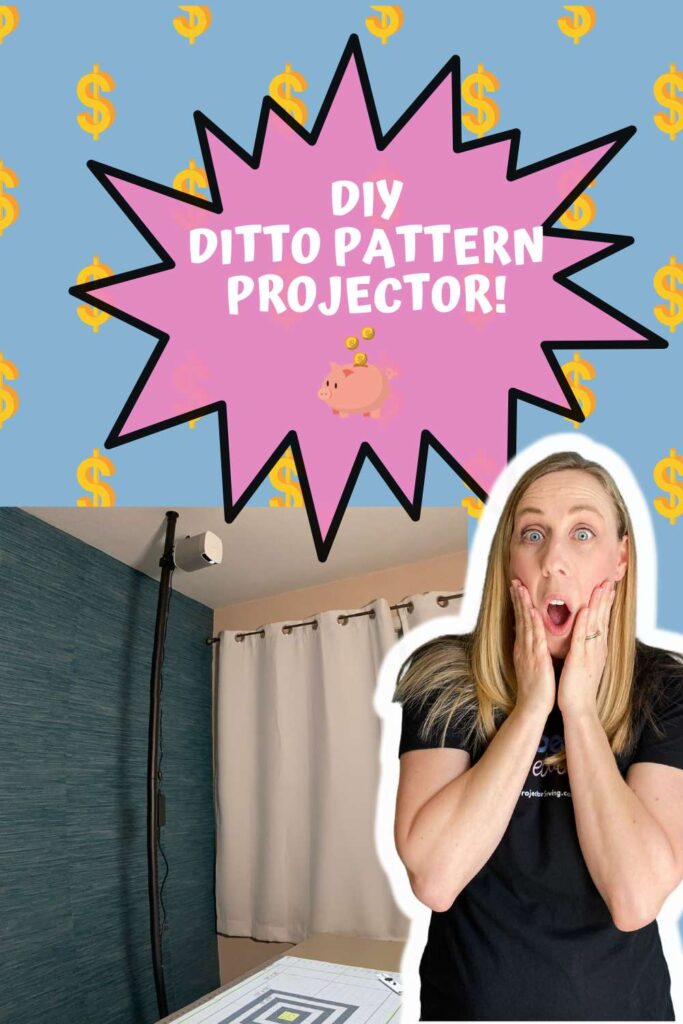


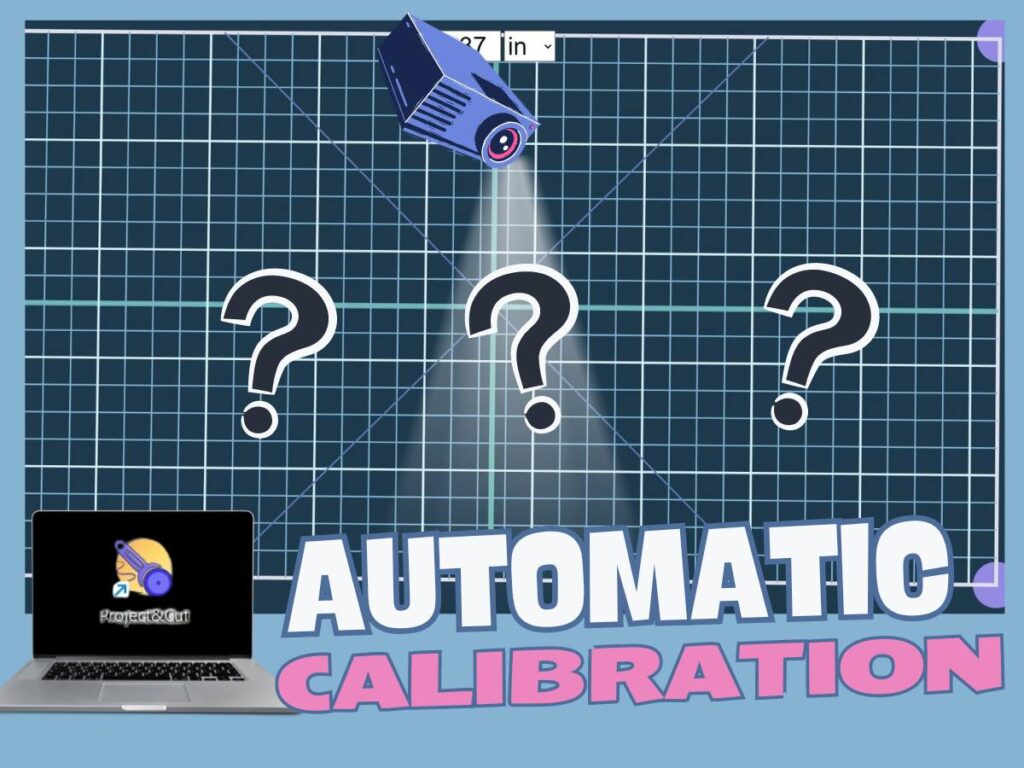
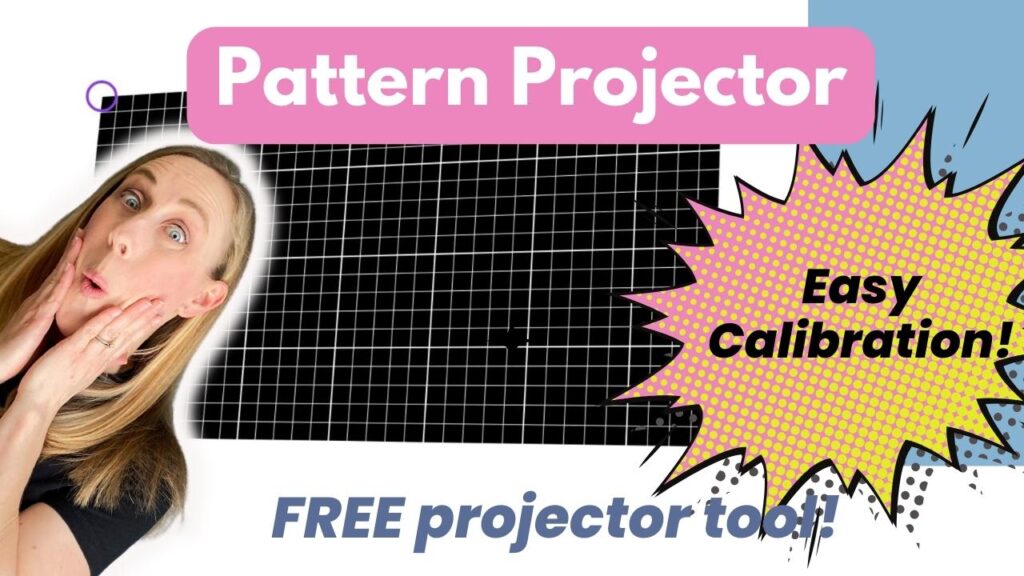
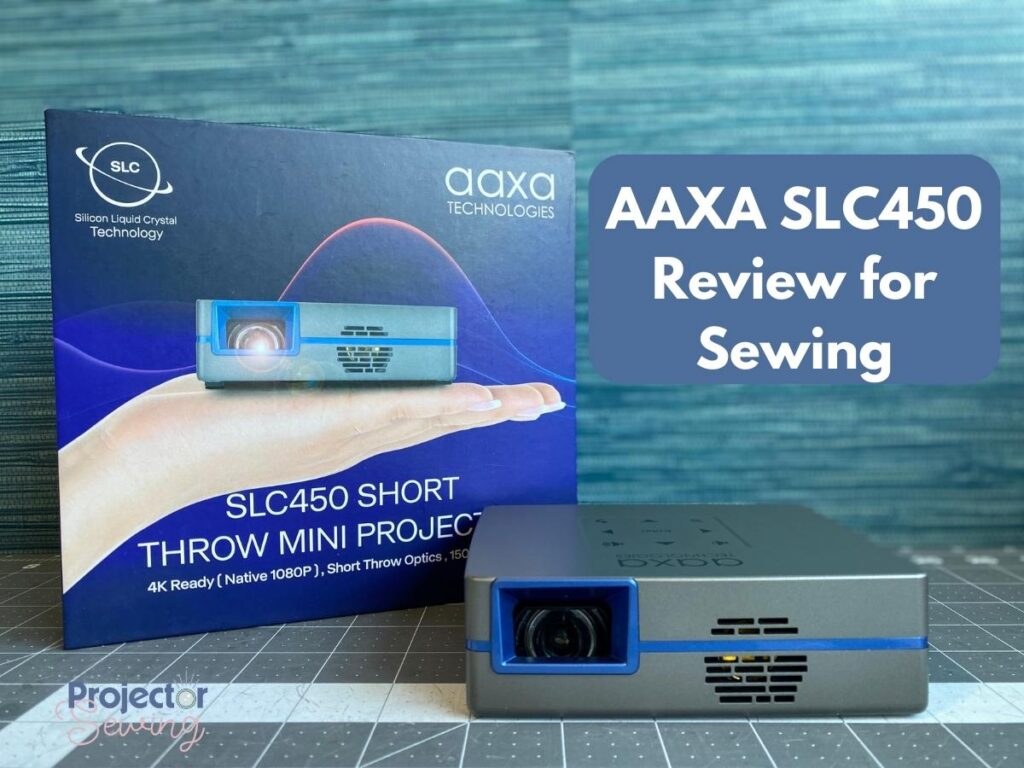
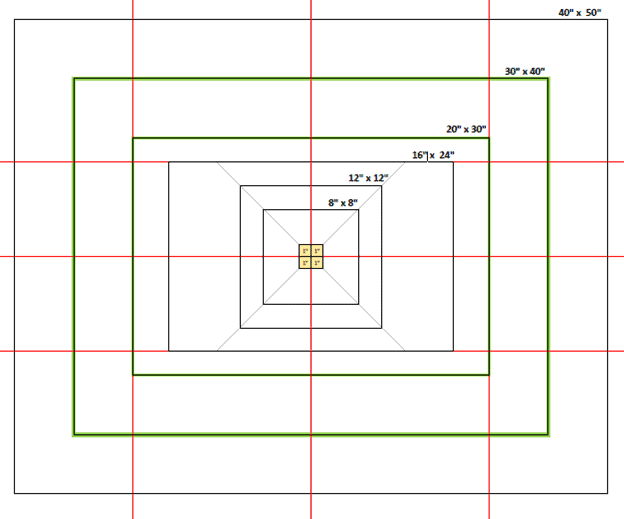
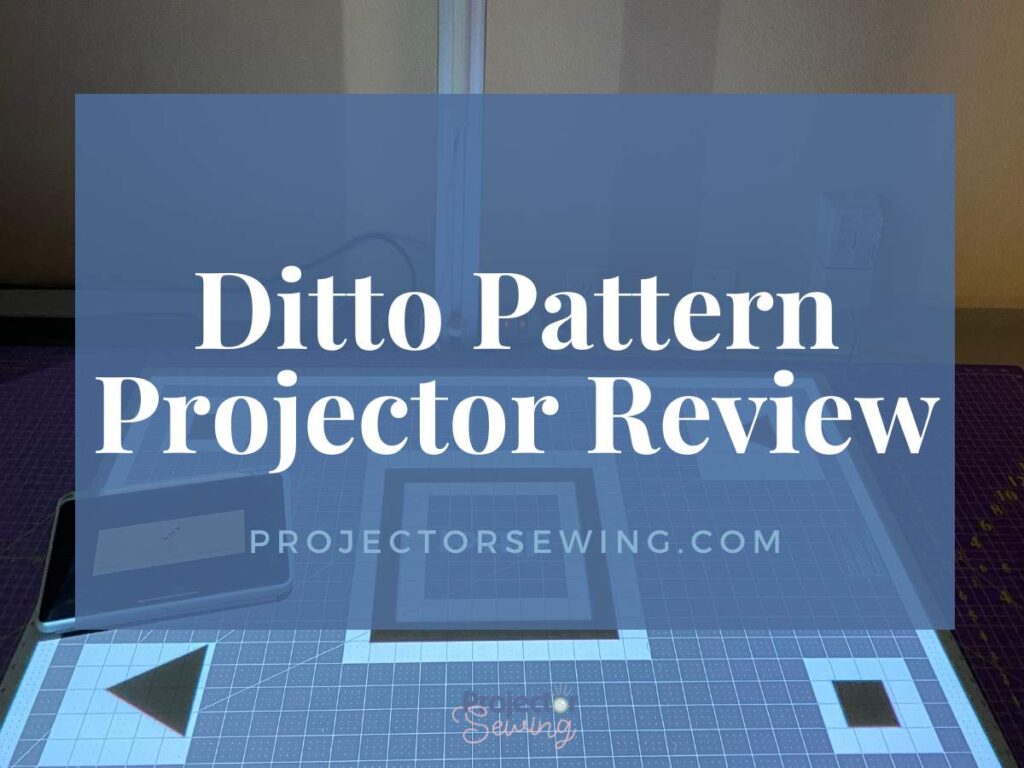
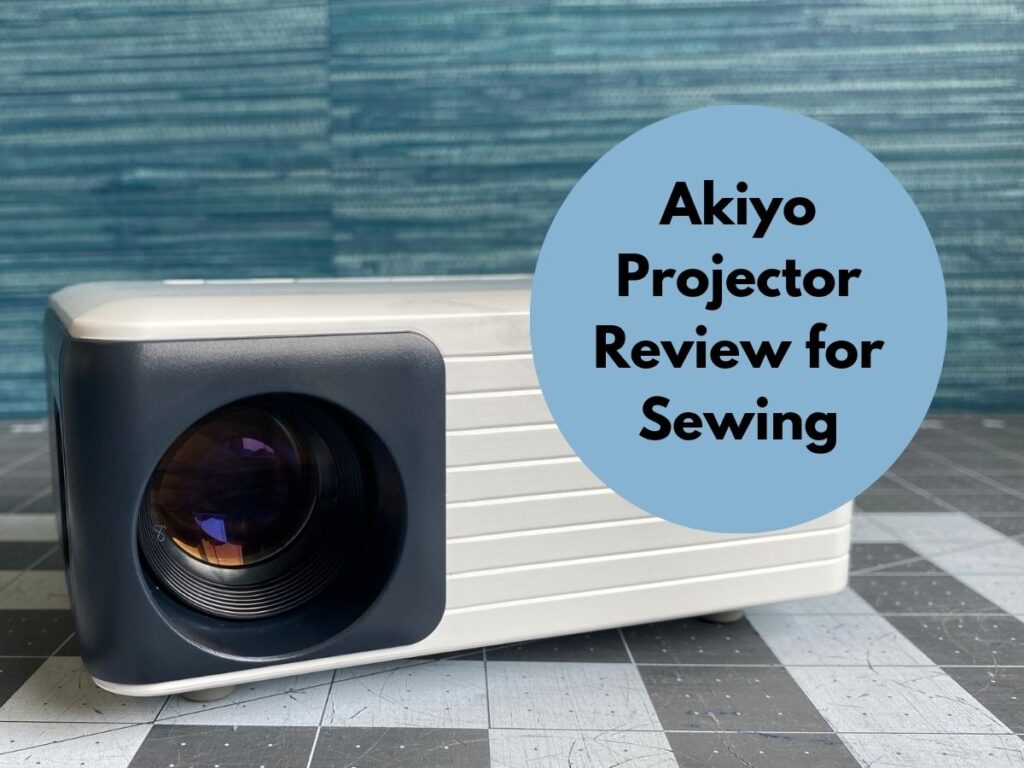
I have an UST, could not get the calibration right gave up. My husband purchased this projector for the same setup; Up an running in an hour. Thank you, for teaching a senior new tricks. Your videos are clear and filled with information. I have cut a few children’s patterns and they came out perfect.
Yay! I’m so happy for you! Glad my videos and website are helpful! Thanks for the comment! 💕
This was soooooo helpful. I truly appreciate it. One question do I have to use a certain cutting mat. Again thanks for answering with some precise instructions and information
Glad it was helpful! Any non-transparent, mat with a grid works well for calibration and cutting!
Thank-you Sheredth! I really appreciate your detailed instructions and videos. I purchased and watched most of your Complete Projector Confidence Course. Thank you! It’s very good. I purchased your Top Choice Mini projector and a Niche mount, but now I’m regretting my choice because I really do want a larger image size. I’ve decided to not mount it and keep looking for another projector with a larger image size. My question is this: Can I use the shower tension rod and Quick release clamp (recommended for the DIY Ditto projector) with the Mini projector I purchased? My thought is I could get started using the projector I purchased with a smaller image size on a temporary mount while I try and figure out what to buy next.
You are welcome! Yes, people have used a tension rod with a mini projector. Instead of the quick release mount, you will want something that can extend over the table a little bit. (Mini projectors have an “inside” offset, which means they need to be over the table a little bit). This is the one I’ve seen people using https://amzn.to/3NuCyKO.
Thank you so much Sheredith!
Thanks for this informative and balanced comparison Sheredith! I really like the clean look of your DIY setup and now that I’ve started using my own DIY projector setup, I would never be without the freedom of tailoring (any of) my patterns digitally before cutting into fabric. I appreciate all the knowledge and experience you share here and on Facebook.
Thank you, Jo! So glad you are enjoying your sewing projector setup!